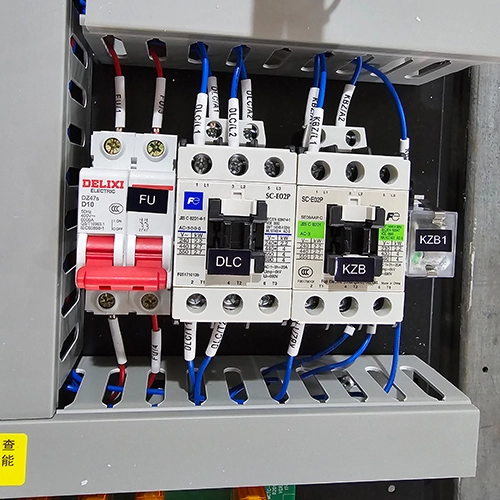Tabla de contenidos
Palancaelevator control switch
Title:
Exploring the Essential Safety Features of Elevator Control Switches
Introducción:
Elevator control switches are pivotal components of elevator systems, responsible for ensuring the safe and efficient movement of passengers within buildings. The incorporation of essential safety features in these control switches plays a critical role in safeguarding passengers during their vertical journeys. This article delves into the fundamental safety features integrated into elevator control switches and their significance in maintaining a secure environment for passengers.
1. Emergency Stop Button:
Immediate Response to Critical Situations
The emergency stop button is a fundamental safety feature of elevator control switches, providing passengers with a means to halt the elevator’s movement in emergencies. By pressing the emergency stop button, passengers can immediately bring the elevator to a stop, addressing unforeseen circumstances such as malfunctions or passenger distress. This feature empowers passengers with a sense of control and ensures quick intervention during critical situations, enhancing overall safety.
2. Overload Protection:
Preventing Hazards Due to Excessive Weight
Overload protection is a crucial safety mechanism integrated into elevator control switches to prevent hazards associated with overloading. By monitoring the weight inside the elevator cabin, the control switch ensures that the elevator does not exceed its maximum weight capacity. This feature plays a vital role in maintaining the safety of passengers and the elevator system by preventing accidents caused by excessive weight loads and ensuring a safe and comfortable travel experience.
3. Door Safety Sensors:
Enhancing Passenger Security during Entry and Exit
Door safety sensors are essential components of elevator control switches that enhance passenger security during boarding and disembarking. These sensors detect obstructions in the doorway and prevent the doors from closing when an obstacle is present. By ensuring that the doors close only when the pathway is clear, door safety sensors reduce the risk of accidents, such as entrapment or injuries, and contribute to a safer environment for passengers.
4. Safety Interlocks:
Ensuring Secure Door Operations and Passenger Safety
Safety interlocks are critical components of elevator control switches that ensure secure door operations and passenger safety. These interlocks prevent the elevator from moving if the doors are not fully closed or if they encounter obstructions during operation. By verifying that the doors are securely shut before the elevator can operate, safety interlocks minimize the risk of accidents, such as door-related incidents, and enhance the overall safety of the elevator system.
5. Fire Service Operation:
Facilitating Emergency Evacuations
Elevator control switches often include fire service operation modes to facilitate emergency evacuations during fire incidents. This feature allows firefighters to take control of the elevators for swift evacuation of occupants from the building. By providing a dedicated mechanism for emergencies, fire service operation enhances the safety and efficiency of evacuation procedures, ensuring the well-being of building occupants during emergencies.
6. Redundant Safety Systems:
Enhancing Reliability and Redundancy
Redundancy in safety systems is a crucial aspect of elevator control switches to enhance reliability and ensure passenger safety. By incorporating redundant safety features and backup mechanisms, these switches minimize the risk of failures and provide additional layers of protection for passengers. Redundant safety systems increase the resilience of elevator control switches, making them more dependable and capable of maintaining safety standards in various scenarios.
Conclusión:
In conclusion, elevator control switches incorporate a range of essential safety features that are integral to ensuring the safety and well-being of passengers during vertical transportation. From emergency stop buttons and overload protection mechanisms to door safety sensors, safety interlocks, fire service operation modes, and redundant safety systems, these features collectively contribute to the secure operation of elevators. By prioritizing passenger safety and implementing robust safety measures, elevator control switches play a crucial role in maintaining a safe and reliable environment for passengers, upholding the highest standards of safety in vertical transportation systems.


